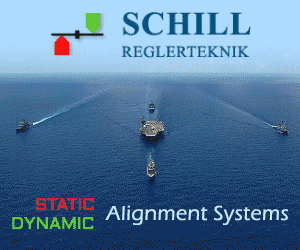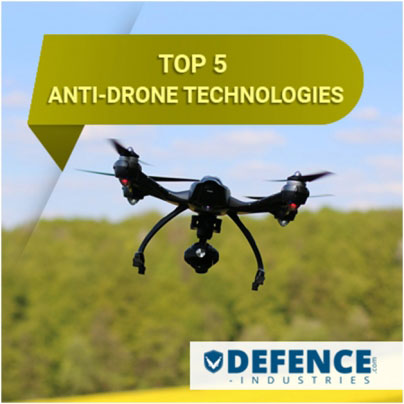Armoured Evolution: Enhancements and Upgrades in Fighting Vehicles

Over the years, there has been a significant evolution in fighting vehicles, particularly in terms of their armour, enhancements, and upgrades. From humble beginnings to modern technologically advanced machines, the development of these armoured vehicles has been driven by the need to provide better protection, mobility, and firepower on the battlefield. This article delves into the world of armoured evolution, exploring the innovations that have shaped the fighting vehicles we see today.
Evolution of Armoured Vehicles throughout History
Armoured vehicles have come a long way since their inception. The earliest forms of armoured vehicles can be traced back to ancient civilizations, where siege towers and chariots were used to protect soldiers during battles. As time progressed, so did the need for more advanced protection. In the late 19th century, the first tank, the British Mark I, was developed and introduced during World War I. This marked a significant milestone in armoured vehicle evolution, as tanks became a formidable force on the battlefield.
During World War II, tanks underwent further enhancements and upgrades. The introduction of sloped armour improved the vehicles' resistance to enemy fire, while advancements in engine technology allowed for greater mobility and speed. These improvements played a crucial role in shaping the outcome of the war and showcased the potential of armoured vehicles in modern warfare.
Importance of Enhancements and Upgrades in Fighting Vehicles
Enhancements and upgrades in fighting vehicles are of paramount importance in ensuring military superiority and the safety of armed forces. As the nature of warfare continues to evolve, so do the threats faced on the battlefield. Armoured vehicles need to adapt and incorporate the latest advancements to effectively counter these threats.
One key aspect of enhancements and upgrades is the improvement of the vehicle's armour. The armour of modern fighting vehicles is designed to withstand various threats, including ballistics, blasts, and chemical attacks. The use of composite materials, such as ceramic or composite metal, provides increased protection while keeping the vehicle's weight manageable. Additionally, reactive and active protection systems have been developed to counter incoming projectiles or missiles, further enhancing the survivability of the vehicle and its crew.
Advancements in Armour Technology
Advancements in armour technology have played a crucial role in the evolution of fighting vehicles. The traditional use of steel armour has evolved to incorporate more sophisticated materials that offer superior protection. Composite materials, such as carbon fiber reinforced polymers, have become increasingly popular due to their high strength-to-weight ratio. These materials provide excellent ballistic protection while reducing the overall weight of the vehicle, improving its mobility and fuel efficiency.
Moreover, advancements in nanotechnology have opened up new possibilities in armoured vehicle design. Nanocomposites, which incorporate nanoparticles into the matrix material, offer enhanced strength and durability. Their ability to self-heal and provide better resistance to corrosion makes them ideal for military applications. The integration of nanotechnology in armour technology has revolutionized the capabilities of fighting vehicles, providing unprecedented levels of protection.
Upgrades in Firepower and Targeting Systems
Enhancements in fighting vehicles extend beyond just the armour. The firepower and targeting systems of modern armoured vehicles have seen significant upgrades, allowing for greater precision and lethality on the battlefield. The integration of advanced sensors, such as thermal imaging and laser range finders, enables improved target acquisition and identification, even in challenging environmental conditions.
In addition, the introduction of advanced communication systems has revolutionized the way fighting vehicles operate. Real-time sharing of information between vehicles and command centers allows for better coordination and decision-making, ultimately leading to more effective and efficient military operations. The integration of artificial intelligence and machine learning algorithms further enhances the capabilities of these communication systems, enabling autonomous decision-making and adaptive responses in complex combat situations.
Improvements in Mobility and Maneuverability
Mobility and manoeuvrability are critical factors in the effectiveness of fighting vehicles on the battlefield. Upgrades in these areas have significantly improved the operational capabilities of armoured vehicles. Advancements in engine technology, suspension systems, and tracks have resulted in increased speed, agility, and cross-country mobility.
Furthermore, the integration of hybrid or electric propulsion systems in some fighting vehicles has reduced their environmental impact and improved fuel efficiency. This not only reduces the logistical burden of fuel supply but also allows for longer operational ranges, increasing the vehicle's overall effectiveness in extended missions.
Enhanced Communication and Situational Awareness
Effective communication and situational awareness are paramount in modern warfare. Upgrades in fighting vehicles have focused on improving these aspects to ensure better coordination and response capabilities on the battlefield. The integration of advanced communication systems, such as secure datalinks and satellite communications, enables seamless information exchange between vehicles, troops, and command centers.
Additionally, the use of advanced sensor technologies, such as radars and cameras, provides real-time situational awareness to the vehicle's crew. This allows them to make informed decisions and react quickly to changing battlefield conditions. The integration of augmented reality displays further enhances situational awareness by overlaying digital information on the physical environment, providing vital information at a glance.
Future Trends in Armoured Vehicle Enhancements
The evolution of armoured vehicles shows no signs of slowing down. As technology continues to advance, new trends and innovations will shape the future of these fighting machines. One such trend is the increased use of unmanned or autonomous vehicles. These vehicles can perform various tasks without risking human lives, making them ideal for reconnaissance, surveillance, and logistics operations.
Another emerging trend is the integration of advanced robotics and artificial intelligence into armoured vehicles. Autonomous targeting and decision-making capabilities, coupled with advanced sensor systems, will revolutionize the way armoured vehicles operate on the battlefield. These advancements will not only enhance the effectiveness of military operations but also reduce the risk to human personnel.
Challenges and Considerations in Implementing Upgrades
While enhancements and upgrades in armoured vehicles bring numerous benefits, they also pose challenges and considerations. One of the main challenges is the cost associated with implementing these upgrades. The development and integration of advanced technologies can be expensive, requiring significant investments in research, development, and production.
Another consideration is the need for extensive testing and validation of these upgrades to ensure their reliability and effectiveness. Armoured vehicles operate in high-stress environments and must withstand extreme conditions. Thorough testing is essential to ensure that the upgrades meet the required standards and perform as expected in combat situations.
Conclusion: The Impact of Advancements in Armoured Vehicle Technology
The evolution of armoured vehicles has come a long way, driven by the need for improved protection, mobility, and firepower on the battlefield. Enhancements and upgrades in armour, firepower, targeting systems, mobility, and communication have revolutionized the capabilities of fighting vehicles, making them more effective and adaptable in modern warfare.
As technology continues to advance, the future of armoured vehicles looks promising. The integration of advanced materials, nanotechnology, artificial intelligence, and robotics will further enhance the capabilities of these machines, ensuring the safety of armed forces and maintaining military supremacy.
In conclusion, the ongoing armoured evolution is a testament to the relentless pursuit of innovation in military technology. The enhancements and upgrades in fighting vehicles not only reflect the changing nature of warfare but also serve as a reminder of the importance of adaptability and continuous improvement in the face of evolving threats. Armoured vehicles will continue to evolve and play a crucial role in shaping the outcome of future conflicts, safeguarding the lives of those who serve.









